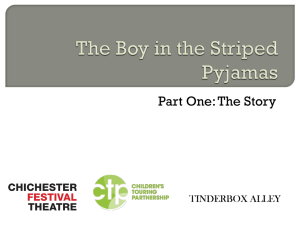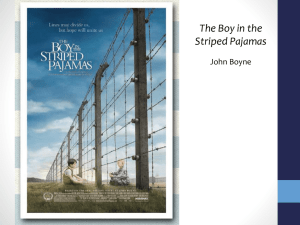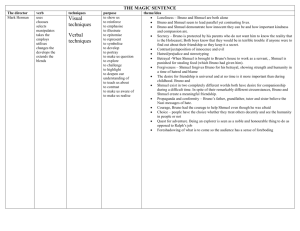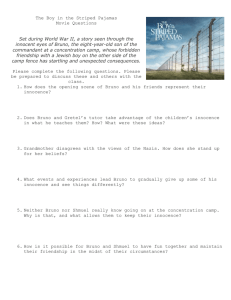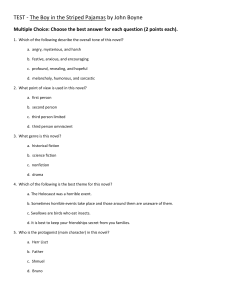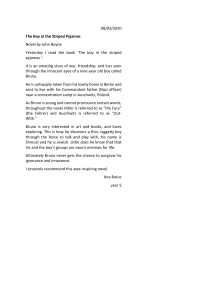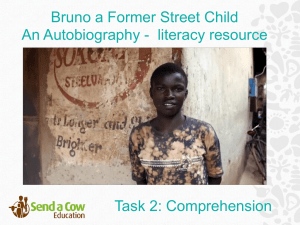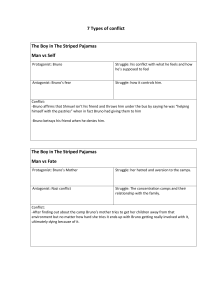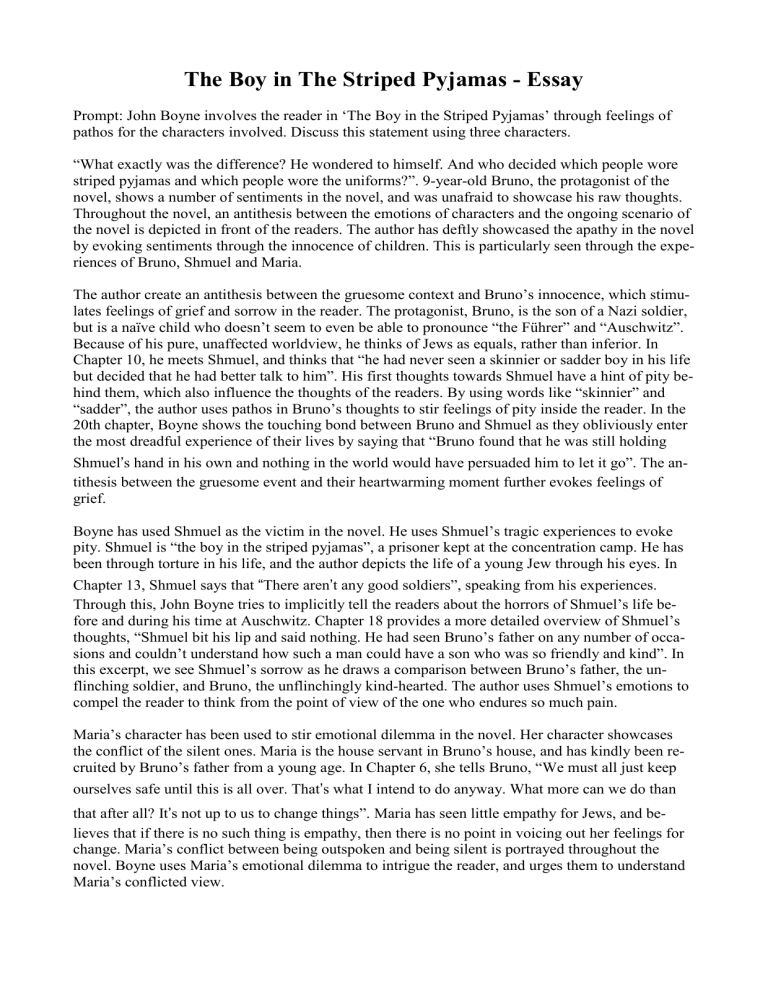
The Boy in The Striped Pyjamas - Essay Prompt: John Boyne involves the reader in ‘The Boy in the Striped Pyjamas’ through feelings of pathos for the characters involved. Discuss this statement using three characters. “What exactly was the difference? He wondered to himself. And who decided which people wore striped pyjamas and which people wore the uniforms?”. 9-year-old Bruno, the protagonist of the novel, shows a number of sentiments in the novel, and was unafraid to showcase his raw thoughts. Throughout the novel, an antithesis between the emotions of characters and the ongoing scenario of the novel is depicted in front of the readers. The author has deftly showcased the apathy in the novel by evoking sentiments through the innocence of children. This is particularly seen through the experiences of Bruno, Shmuel and Maria. The author create an antithesis between the gruesome context and Bruno’s innocence, which stimulates feelings of grief and sorrow in the reader. The protagonist, Bruno, is the son of a Nazi soldier, but is a naïve child who doesn’t seem to even be able to pronounce “the Führer” and “Auschwitz”. Because of his pure, unaffected worldview, he thinks of Jews as equals, rather than inferior. In Chapter 10, he meets Shmuel, and thinks that “he had never seen a skinnier or sadder boy in his life but decided that he had better talk to him”. His first thoughts towards Shmuel have a hint of pity behind them, which also influence the thoughts of the readers. By using words like “skinnier” and “sadder”, the author uses pathos in Bruno’s thoughts to stir feelings of pity inside the reader. In the 20th chapter, Boyne shows the touching bond between Bruno and Shmuel as they obliviously enter the most dreadful experience of their lives by saying that “Bruno found that he was still holding Shmuel’s hand in his own and nothing in the world would have persuaded him to let it go”. The antithesis between the gruesome event and their heartwarming moment further evokes feelings of grief. Boyne has used Shmuel as the victim in the novel. He uses Shmuel’s tragic experiences to evoke pity. Shmuel is “the boy in the striped pyjamas”, a prisoner kept at the concentration camp. He has been through torture in his life, and the author depicts the life of a young Jew through his eyes. In Chapter 13, Shmuel says that “There aren’t any good soldiers”, speaking from his experiences. Through this, John Boyne tries to implicitly tell the readers about the horrors of Shmuel’s life before and during his time at Auschwitz. Chapter 18 provides a more detailed overview of Shmuel’s thoughts, “Shmuel bit his lip and said nothing. He had seen Bruno’s father on any number of occasions and couldn’t understand how such a man could have a son who was so friendly and kind”. In this excerpt, we see Shmuel’s sorrow as he draws a comparison between Bruno’s father, the unflinching soldier, and Bruno, the unflinchingly kind-hearted. The author uses Shmuel’s emotions to compel the reader to think from the point of view of the one who endures so much pain. Maria’s character has been used to stir emotional dilemma in the novel. Her character showcases the conflict of the silent ones. Maria is the house servant in Bruno’s house, and has kindly been recruited by Bruno’s father from a young age. In Chapter 6, she tells Bruno, “We must all just keep ourselves safe until this is all over. That’s what I intend to do anyway. What more can we do than that after all? It’s not up to us to change things”. Maria has seen little empathy for Jews, and believes that if there is no such thing is empathy, then there is no point in voicing out her feelings for change. Maria’s conflict between being outspoken and being silent is portrayed throughout the novel. Boyne uses Maria’s emotional dilemma to intrigue the reader, and urges them to understand Maria’s conflicted view. All of these examples further iterate the author’s usage of pathos in the novel. Boyne has skilfully chosen to tell the take through the eyes of Bruno, the innocent, Shmuel, the victim and Maria, the silent. Their emotions are used to weave the novel together, and induce grief, pity and sadness in the reader.
